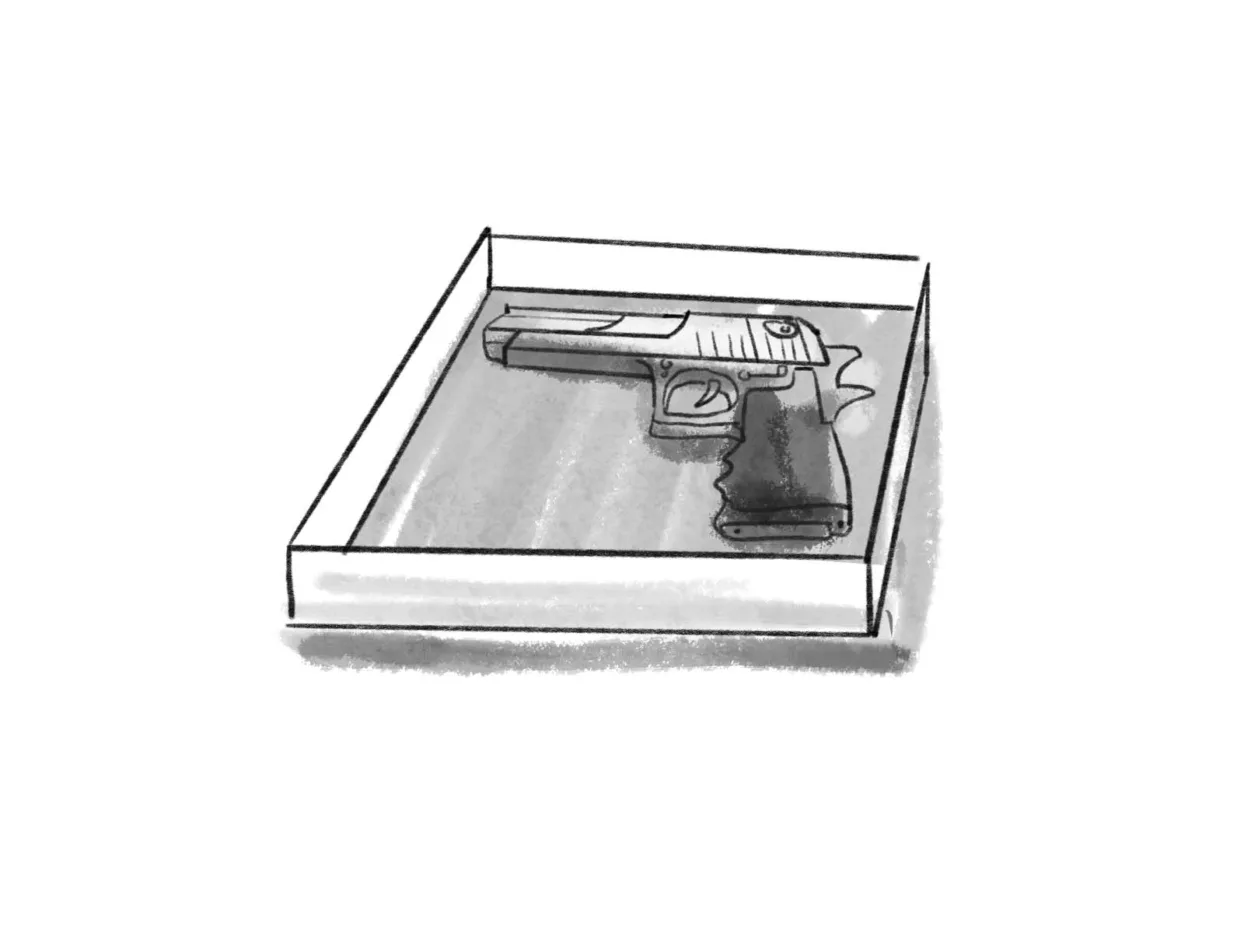
Image by Ivy Sanders Schneider

Image by Ivy Sanders Schneider
June 30 was a busy day at the Supreme Court. Its conservative supermajority struck down the Biden administration’s student loan cancellation initiative and sided with a for-profit business that claimed a constitutional right to discriminate against same-sex couples seeking wedding services. (All this just one day after gutting affirmative action in college admissions.) These blockbuster opinions reflected the unapologetic ambition that has dominated the high court since the death of Justice Ruth Bader Ginsburg.
In a terse order also issued on June 30, the Court announced it would hear oral argument this fall in United States v. Rahimi, volunteering to plunge itself into yet another culture war fracas. The case involves a Second Amendment challenge to the constitutionality of banning people under domestic-violence restraining orders from possessing firearms, and it gives the Court a chance to double down on its dual projects of weakening women’s station in constitutional law and flooding the country with guns.
The Court’s 2022 decision in New York State Rifle & Pistol Association, Inc. v. Bruen announced that Second Amendment claims should be evaluated based on “a test rooted in the Second Amendment’s text, as informed by history.” To the Court’s hard-liners, this originalist ruling has proven insufficiently pro-gun and Procrustean. Lower courts applying the so-called “text, history, and tradition” test have reached divergent interpretations on nearly every Second Amendment question they’ve faced. A federal judge applying Bruen in Oregon, for example, upheld high-capacity-magazine bans; a federal judge in Colorado struck down a similar law. And in Illinois, two federal judges reached different conclusions on the permissibility of a firearm ban passed after a mass shooting at a Fourth of July parade in Highland Park.
Asking judges to use history to find an elusive “original meaning” based on the text of the Second Amendment is the legal equivalent of asking them to take a judicial Rorschach test. Judges sympathetic to gun rights find and see history supporting their preexisting views; ditto for judges sympathetic to gun safety laws. History, it turns out, speaks in multiple and conflicting registers. Even when historical events are knowable, they are often ambiguous — impossible to reduce to simplistic tests and then applied to contemporary questions.
The doctrinal mayhem created by Bruen has put the intellectual incoherence of originalism in stark relief, especially to liberal onlookers. But it comes at a time when originalism is more dominant than ever before. Even prominent progressive thinkers and pundits have been subtly echoing its precepts. Slate’s Mark Joseph Stern, for instance, recently praised Justice Ketanji Brown Jackson for supposedly trying to reclaim the Constitution’s “original meaning” from the right, and having “zero interest in the ‘living Constitution’ sometimes associated with liberal judging.” Kim Forde-Mazrui, a liberal law professor at the University of Virginia, recently argued that the Constitution’s clear “original meaning” supported the legality of affirmative action.
Yet there is no such thing as the Constitution’s “original meaning,” let alone one that can be clearly, dependably derived by judges. If there were, the post-Bruen landscape would have been radically different. Liberals, of course, can make arguments dressed up in originalist argot, but shying away from the idea of a “living Constitution” — in which rights are released from the myopic vision of the framers — would mean abandoning the only framework for egalitarianism at the Court. Originalism is a road to both injustice and incoherence. Look no further than Zackey Rahimi, the drug dealer behind United States v. Rahimi, who used his guns to threaten, intimidate, and assault several women, opening fire in public five times within two months.
The doctrinal mayhem left in Bruen’s wake coincided with havoc in American streets, schools, businesses, and homes. Within hours of the Court’s granting certiorari in the case, a shooter in Sacramento left four people hospitalized, and another in Chicago killed one and wounded three. So far this year, there have been a record number of mass shootings in the United States. Assailants have killed people at malls, at an elementary school, at high schools, at Michigan State University, at a bank, at bars, at a Dollar General store, and at a Fourth of July party. People have died while they were driving on freeways, attending neighborhood gatherings, and dancing at a Lunar New Year celebration.
A just Court would take up Rahimi to remove the judicial straitjacket worsening the uniquely American gun crisis. This Court took up Rahimi to bolster a theory of constitutional interpretation — one that fuels these atrocities.
Duncan Hosie is an appellate lawyer, a legal scholar, and a writer who lives in Brooklyn.